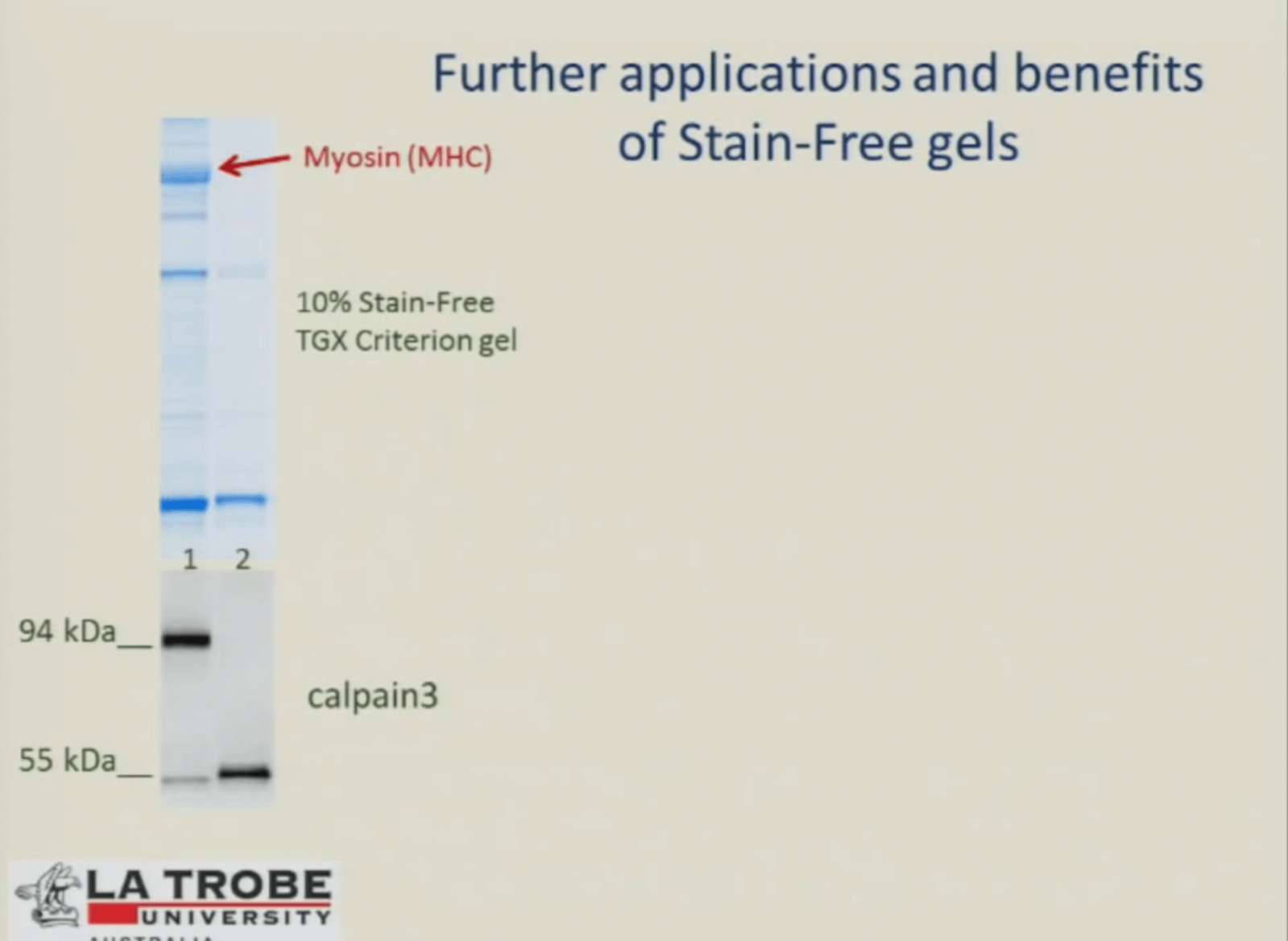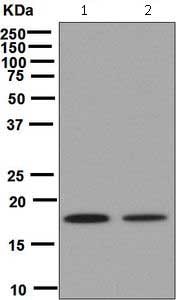

The pore size of this sieve is alterable by adjusting the percentage of polyacrylamide/ N, N'-methylenebisacrylamide as they are inversely proportional. This matrix creates a molecular sieve that imbues retarding properties. A gel matrix is formed from the polymerization of acrylamide and crosslinking of N, N'-methylenebisacrylamide. Indeed, larger proteins travel slower in comparison to smaller proteins due to retarding properties of the porous gel. Therefore, the rate of protein migration is proportional to weight. Typically, PAGE is an analytical biochemistry method used to separate contents such as nucleic acids and proteins by electrophoretic mobility in a chemically inert gel however, by adding SDS, a potent anionic detergent, all denatured proteins will be coated with an equal charge to mass ratio. The separation of proteins by weight is possible due to sodium dodecyl sulfate-polyacrylamide gel electrophoresis (SDS-PAGE) -particularly its combinatory use of a detergent and a discontinuous buffer system. Separation of Proteins by Molecular Weight Prepared samples are heated before loading to further denature proteins to their respective primary structure. Thus, proteins undergo electrophoresis by their monomeric weight. Tris-HCl pH 6.80 works in conjunction with the discontinuous buffer system, explained in further detail below. Beta-mercaptoethanol (BME) is a reducing agent that acts on disulfide bonds in the absence of BME, proteins with disulfide bonds retain some shape and do not electrophorese consummately by molecular weight.

SDS is a potent anionic detergent that coats denatured proteins with an equal anion to mass ratio this masks proteins' charge, shape, and size characteristics and renders them solely a function of molecular weight. Bromophenol blue (BPB) is a nonreactive reagent that serves as a dye front for electrophoresis. Glycerol adds density to samples, so they drift into the loading wells. Laemmli buffer (60mM Tris-HCl pH 6.8 20% glycerol 2% SDS 4% beta-mercaptoethanol 0.01% bromophenol blue) is unique to western blot sample preparation as each reagent is purposeful for SDS-PAGE. Therefore, there is always a 1 to 1 volume ratio of normalized protein and Laemmli buffer in a western blot sample.

Protein extract gets normalized with cell-lysis buffer to the desired protein concentration, and there is an addition of an equal volume of Laemmli (sample) buffer. Thus, by running this assay with known protein standards, a linear regression standard curve is generated to calculate unknown protein extract concentrations.Īll western blot samples have three things: protein extract, cell lysis buffer, and Laemmli (sample) buffer. In brief, the dye Coomassie Brilliant Blue G-250 complexes with proteins to change color, and this absorbance shift gets recorded by a spectrophotometer. By conducting a Bradford assay, a colorimetric protein assay that exploits a dye’s interaction with protein, protein concentration is quantifiable. Intuitively, this is imperative for a valid experiment as unequal proteins per lane can skew the analysis. There must be an equal concentration of proteins per western blot sample. Collectively, this information underscores the need to tailor protein extraction to sample type and the target protein. PPIs are used to maintain the structure and phosphorylation status of the target protein from the activity of endogenous phosphatases upon cell lysis and exogenous phosphatases in the lysis microenvironment. As such, gentle buffers without detergents are required. Although rare, some antibodies will not be able to detect denatured samples. For example, radioimmunoprecipitation assay buffer (RIPA) is more adept for nuclear and mitochondrial proteins. Furthermore, the cell lysis buffer used in extraction should align with target protein cellular localization. For example, most tissue preparation is by homogenization or sonication however, osmotic shock or detergent lysis is more suited for easily lysed cells such as erythrocytes or cultured cells. There are numerous methods of extraction, and proper selection depends on the sample type. Western blot samples are first prepared by protein extraction with specialized cell lysis buffers and protease and phosphatase inhibitors (PPIs). Proper sample preparation for subsequent electrophoresis is crucial for downstream analysis. Western blot relies on the principles of equal loading of proteins, separation of proteins by molecular weight, electrophoretic transfer to a suitable membrane, and probing of antibodies.


 0 kommentar(er)
0 kommentar(er)
